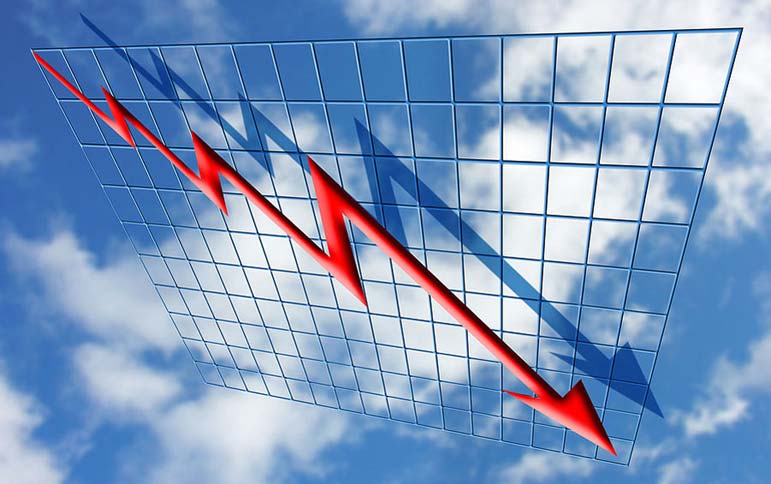
I am not quite sure exactly when I received "The Subprime Primer," a slide deck that someone e-mailed me early in 2008. I do remember thinking that it was unlikely ever to be surpassed as an introduction to the financial chain reaction that began as I was writing "The Ascent of Money" and reached its climax in the months after the failure of Lehman Brothers, the 10th anniversary of which fell Saturday.
Illustrated with foul-mouthed stick men, the Subprime Primer's 45 slides told the story of how "crappy" mortgage loans made by "Ace Mortgage Brokers" came to be sold to "First Bank of Bankland, Inc.," who then sold them to "RSG Investment Bank of Wall Street." The really smart guys (hence RSG) were the ones who came up with the idea of "creat[ing] a new security and us[ing] these crappy mortgages as collateral," and then selling the resulting collateralized debt obligation to investors such as the "Norwegian Village Pension Fund." We all now know how the story ended.
A decade has passed since the escalation of the "credit crunch" into a "global financial crisis" and then a "Great Recession." There are four questions we need to address. First, why did it happen? Second, why, in most countries, did it not turn into a full-blown Depression? Third, why was the recovery from the crisis so anemic? Finally, and most important, could it all happen again?
In "The Ascent of Money," I argued that the crisis could not be explained simplistically — "It was the greed of the bankers!" or "It was reckless deregulation!"— but required a consideration of six different pathologies:
• The inadequate capitalization of the banks of the western world;
• The contamination of the short-term debt market with toxic securities of the sort depicted in The Subprime Primer;
• Errors of monetary policy by the US Federal Reserve, which turned a blind eye to signs of overheating in the American real estate market;
• The emergence of the new forms of financial life known as derivatives, which added an opaque layer of complexity to the system;
• The politically motivated campaign to increase the home-ownership rate in the United States (and some other countries that also experienced housing bubbles); and
• The unbalanced relationship that had developed between the United States and China, which I gave the name "Chimerica."
Second question: Whom or what should we thank for the fact that the 2010s were not the 1930s? The Federal Reserve? The spirit of John Maynard Keynes? A bit of both would be a fair answer, though monetary policy was used for much longer than fiscal policy. But I would give more credit than most Western commentators to China's credit-fueled stimulus program.
Question 3: Whom or what should we blame for the fact that the 2010s were also not the 1990s? Why was the recovery that followed the crisis so underwhelming? Is it justified to speak, as Harvard economist Larry Summers has, of "secular stagnation"? Or was his colleague Ken Rogoff right when he argued that such a large financial crisis was bound to result in a prolonged but finite economic hangover?
I am inclined to side with Rogoff in this debate, but I would add two further points. First, the European Union's horrible mishandling of the crisis surely acted as a brake on recovery. Second, the administration of Barack Obama did its best to throw sand in the American economic machine, in the form of overcomplex regulation.
Keynesians have claimed that the recovery could have been more rapid with even larger fiscal stimulus — the construction of umpteen bridges to nowhere, paid for by yet more government debt. But might it not have made more sense to try tax cuts plus deregulation — the policies belatedly adopted by the Trump administration last year?
Final question: Should we fear another financial crisis? The answer is yes. The most striking feature of the global financial system is how little it has changed in the space of a decade, despite the promulgation of thousands of pages of new financial regulation on both sides of the Atlantic. Banks are certainly better capitalized than they were 10 years ago. But that's about it.
Despite the cryptocurrency mania, Planet Finance is still dominated by fiat money created by banks with fractional reserves, long- and short-term debt instruments issued by governments and corporations, stocks issued by corporations, insurance policies, and mortgages. And its most striking feature, just as in 2008, is the sheer size of the debt mountain.
If the global financial system has not changed fundamentally since 2008, then it does not take great prophetic gifts to predict another crisis. Financial history has not ended, any more than political history ended with the fall of the Berlin Wall.
But the next crisis will not be like the last one. History teaches us not to expend too much energy trying to prevent the last crisis from happening again, but instead to ask the broad question: Which borrowers around the world have over-extended themselves to the point that they will begin to fail in the event of rising real interest rates?
What makes it so easy to predict the next financial crisis is that in some over-leveraged emerging markets — notably Turkey and Argentina — it has already begun. Who will be next? South Africa? Brazil? Or the Big One — China? Somewhere, I hope, the anonymous author of The Subprime Primer is working on a sequel. "The Submerging Market Roadmap," anyone?
Niall Ferguson's new book is "The Square and the Tower: Networks and Power from the Freemasons to Facebook." (Buy it at a 35% discount by clicking here or order in KINDLE edition at a 50% discount by clicking here). He is the Milbank Family Senior Fellow at the Hoover Institution, Stanford University, and a senior fellow of the Center for European Studies, Harvard, where he served for twelve years as the Laurence A. Tisch Professor of History.


 Contact The Editor
Contact The Editor
 Articles By This Author
Articles By This Author